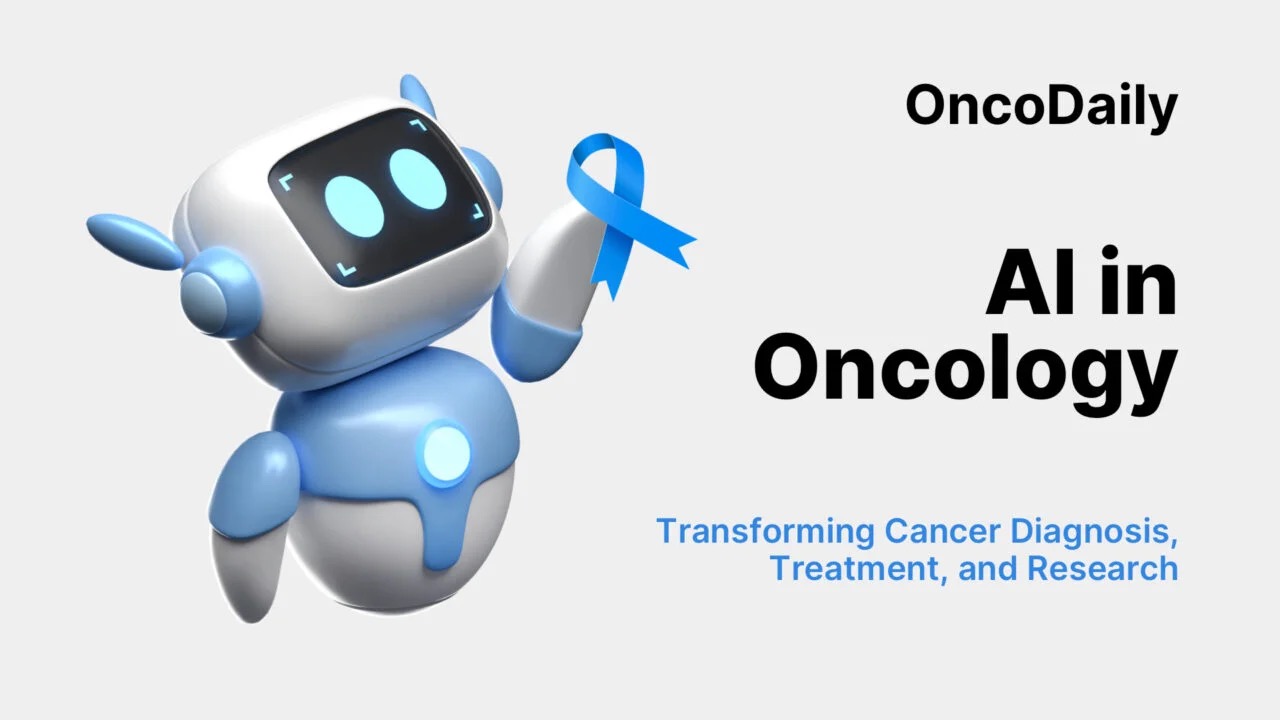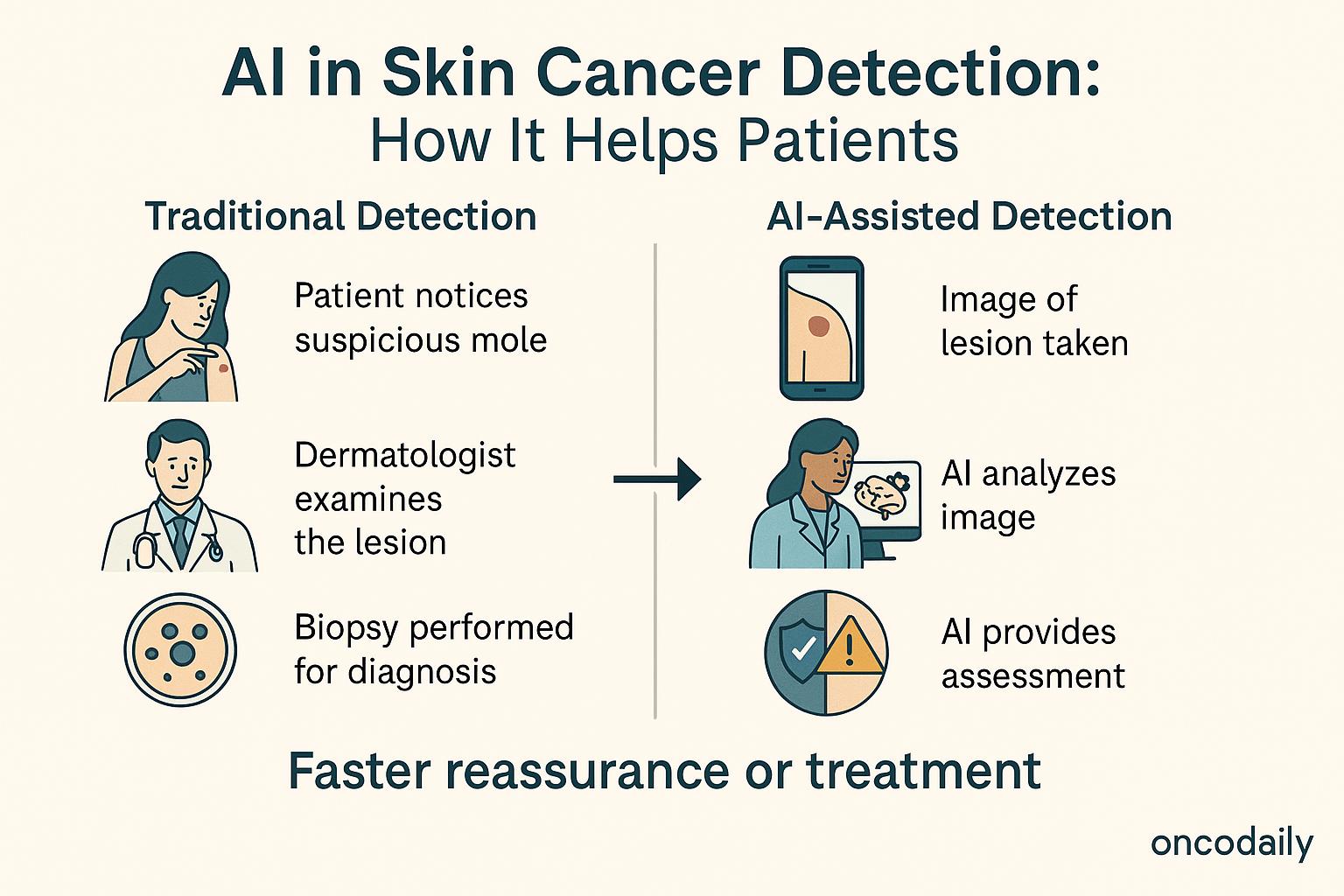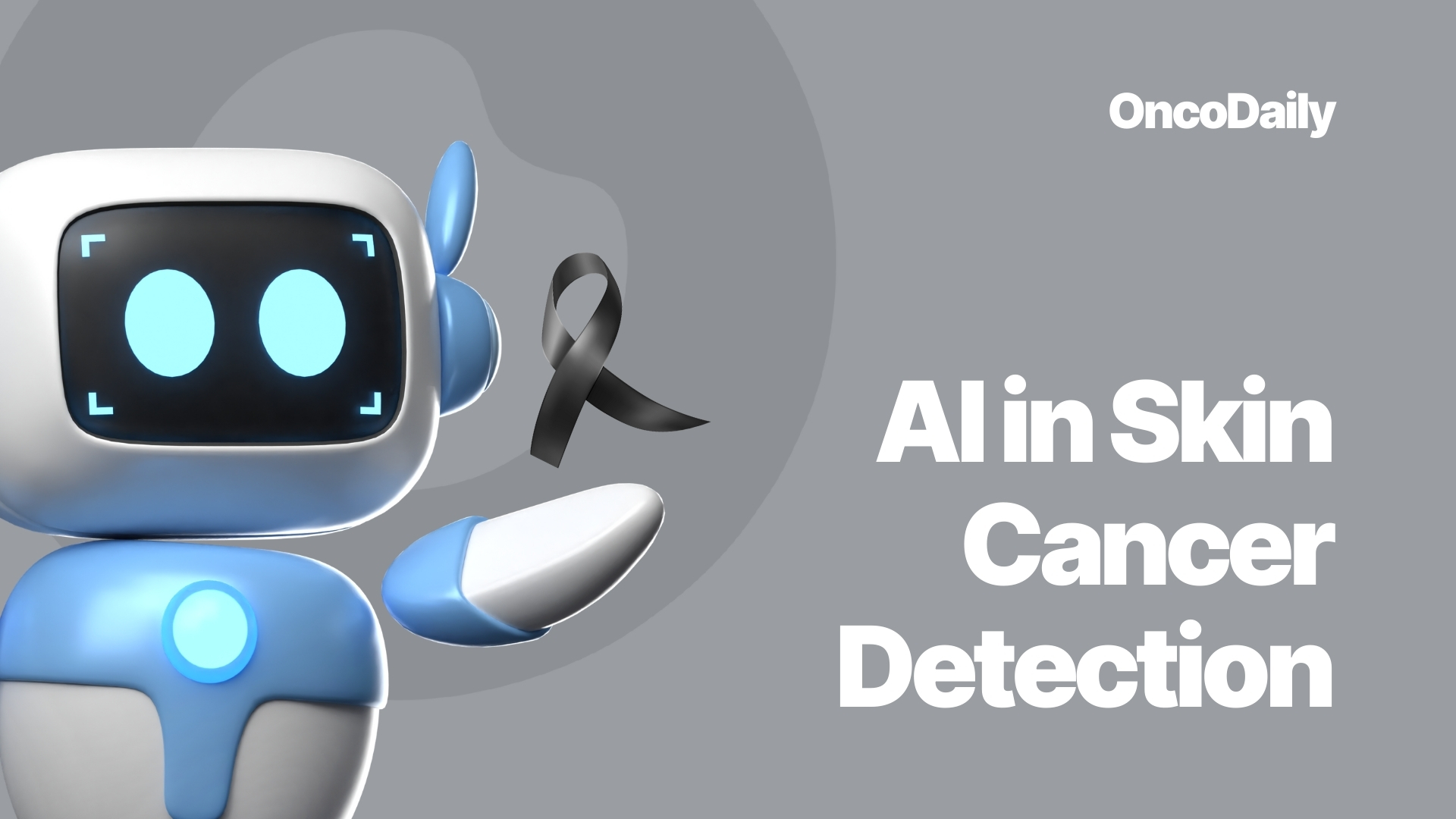Skin cancer is the most common cancer worldwide, with more cases each year than all other cancers combined. Fortunately, when detected early, most skin cancers are highly treatable. The challenge is catching them before they spread. For melanoma, the most dangerous type of skin cancer, the five-year survival rate is over 95% when diagnosed early, but drops dramatically to around 30% once it has metastasized (American Cancer Society, 2024).
AI in skin cancer detection is now playing an important role in addressing this challenge. Artificial intelligence (AI), once considered futuristic, is being used to assist doctors in spotting skin cancer at earlier stages. AI does not cure skin cancer, but it is becoming a powerful partner in screening, diagnosis, and monitoring. For patients, this means faster reassurance when a mole is harmless, quicker treatment when it is suspicious, and improved access to expert-level evaluation even in areas with few dermatologists.
Why Skin Cancer Detection Matters
The majority of skin cancers are basal cell carcinoma (BCC) and squamous cell carcinoma (SCC). These cancers are generally less aggressive but can still cause significant damage if untreated. Melanoma, while less common, is far more dangerous due to its ability to spread quickly to other organs.
Skin cancer is usually first detected through a visual exam. Dermatologists are trained to recognize warning signs, often using dermoscopy, a tool that magnifies structures beneath the skin’s surface. They may apply the ABCDE rule (Asymmetry, Border irregularity, Color variation, Diameter >6 mm, and Evolution) to identify suspicious moles.
However, diagnosis is not always straightforward. Some melanomas mimic benign moles, while some harmless lesions resemble cancer. Even among expert dermatologists, agreement rates can vary, and subtle melanomas are sometimes missed. This creates an opportunity for AI to serve as a second opinion, supporting more consistent and accurate detection.

Read About Melanoma on OncoDaily
How AI Works In Skin Cancer Detection
AI systems are built on deep learning algorithms, a form of machine learning where computers process vast numbers of images to learn patterns. For skin cancer detection, AI is trained on databases containing millions of photographs of skin lesions, labeled by dermatologists and confirmed by biopsy.
When presented with a new image, AI compares the lesion against its learned patterns and calculates a probability of malignancy. In clinical settings, this probability can help dermatologists decide whether a biopsy is necessary.
One landmark study by Esteva et al. (2017) in Nature showed that a convolutional neural network (CNN) achieved performance on par with 21 board-certified dermatologists in classifying skin lesions. More recent studies confirm that AI can detect melanoma with sensitivity equal to or greater than experienced clinicians (Brinker et al., 2019, The Lancet Oncology).
AI In The Clinic: Assisting Dermatologists
In dermatology clinics, AI is being incorporated into digital dermoscopy systems. When a dermatologist captures an image of a mole, the AI software analyzes it instantly and provides a malignancy risk score. The dermatologist then uses this information alongside their own clinical judgment.
Research suggests this combination of human expertise and AI support produces the highest accuracy. A multicenter study published in The Lancet Oncology (Tschandl et al., 2020) demonstrated that AI-assisted dermatologists outperformed dermatologists working alone in correctly identifying skin cancers. This shows that AI is not replacing doctors but enhancing their ability to make accurate diagnoses.
AI At Home: Smartphone Apps And Teledermatology
Beyond clinics, AI has also entered consumer health. Several smartphone apps allow users to photograph moles and receive risk assessments. While these tools can raise awareness, their reliability varies.
A 2020 study in JAMA Dermatology (Han et al., 2020) evaluated multiple skin cancer detection apps and found accuracy to be inconsistent. Some apps had sensitivities as high as 90%, while others missed dangerous melanomas. Importantly, these apps should not replace dermatological exams. Experts caution that they are best used as pre-screening tools, encouraging patients to seek medical attention sooner.
In teledermatology, AI is also beginning to support remote consultations. Patients in rural areas can submit photos of lesions online, which AI helps triage before a dermatologist reviews them. This can reduce waiting times and ensure high-risk cases are prioritized.
Benefits Of AI For Patients
AI in skin cancer detection offers several potential advantages for patients.
First, it improves early detection, which is the single most important factor in survival. By analyzing subtle patterns invisible to the naked eye, AI can help catch cancers before they spread. Second, it reduces false positives. Many patients undergo biopsies that turn out to be benign. By making risk assessments more accurate, AI lowers unnecessary procedures, scarring, and anxiety.
Third, it provides faster results. Instead of waiting days for specialist review, patients may receive immediate assessments that guide next steps. Finally, AI expands access to care. In regions with few dermatologists, AI-assisted screening can help non-specialist doctors identify suspicious lesions, leading to earlier referral and treatment.

Read About AI in Oncology on OncoDaily
Limitations Patients Should Understand
Despite its promise, AI has limitations.
AI depends on the quality and diversity of training data. Many early systems were trained primarily on lighter skin tones, leading to lower accuracy in detecting cancer in darker skin types (Adamson & Smith, 2018, JAMA Dermatology). This raises concerns about equity in cancer care. Efforts are underway to create more inclusive datasets.
AI cannot evaluate the whole patient. Factors like personal history of skin cancer, family genetics, and sun exposure are essential in risk assessment. Only a physician can integrate these with imaging results. Another limitation is regulation. While some AI tools have received CE approval in Europe, regulatory approval in the United States and other regions is ongoing. This means availability may vary depending on where a patient lives.
Finally, patients must remember that AI is not perfect. False positives and false negatives can still occur, so AI should be seen as a tool — not a final decision-maker.
Real-World Examples
AI is already being integrated into dermatology around the world.
In Germany, the DERM.AI system has been tested in clinical practice and showed performance comparable to dermatologists in classifying malignant and benign lesions. In the UK, the NHS has piloted AI-based skin cancer detection tools to reduce waiting times for specialist referrals. In the United States, the FDA has cleared several AI-powered dermatology devices, although they are primarily marketed as decision-support tools rather than diagnostic replacements.
In low-resource countries, projects are exploring how AI can bridge the gap in access. In rural Africa and Asia, where dermatologists are scarce, primary care providers can use AI-assisted smartphone cameras to triage suspicious lesions for referral, potentially saving lives by catching melanoma earlier.

The Future Of AI In Skin Cancer Care
Researchers are working to make AI more robust and patient-friendly. Future directions include:
- Multimodal AI: combining photographic, dermoscopic, and even genetic data to provide a comprehensive skin cancer risk assessment.
- Longitudinal tracking: AI systems that monitor patients’ moles over time, detecting subtle changes that may indicate early melanoma.
- Global datasets: improving accuracy by training on diverse skin tones and populations worldwide.
- Integration into primary care: enabling general practitioners to use AI during routine check-ups, expanding early detection beyond dermatology clinics.
In the long term, AI could become an integral part of skin health management, working alongside dermatologists to prevent, detect, and treat cancers earlier.
Key Takeaway For Patients
AI is not a cure for skin cancer. But it is an important tool that helps doctors detect cancers earlier and more accurately. For patients, this means faster reassurance when lesions are benign, quicker access to treatment when they are not, and improved access to expert-level care even in underserved regions. While it cannot replace human judgment, AI is becoming a powerful partner in the fight against skin cancer.
You Can Watch More on OncoDaily Youtube TV
Written by Armen Gevorgyan, MD
